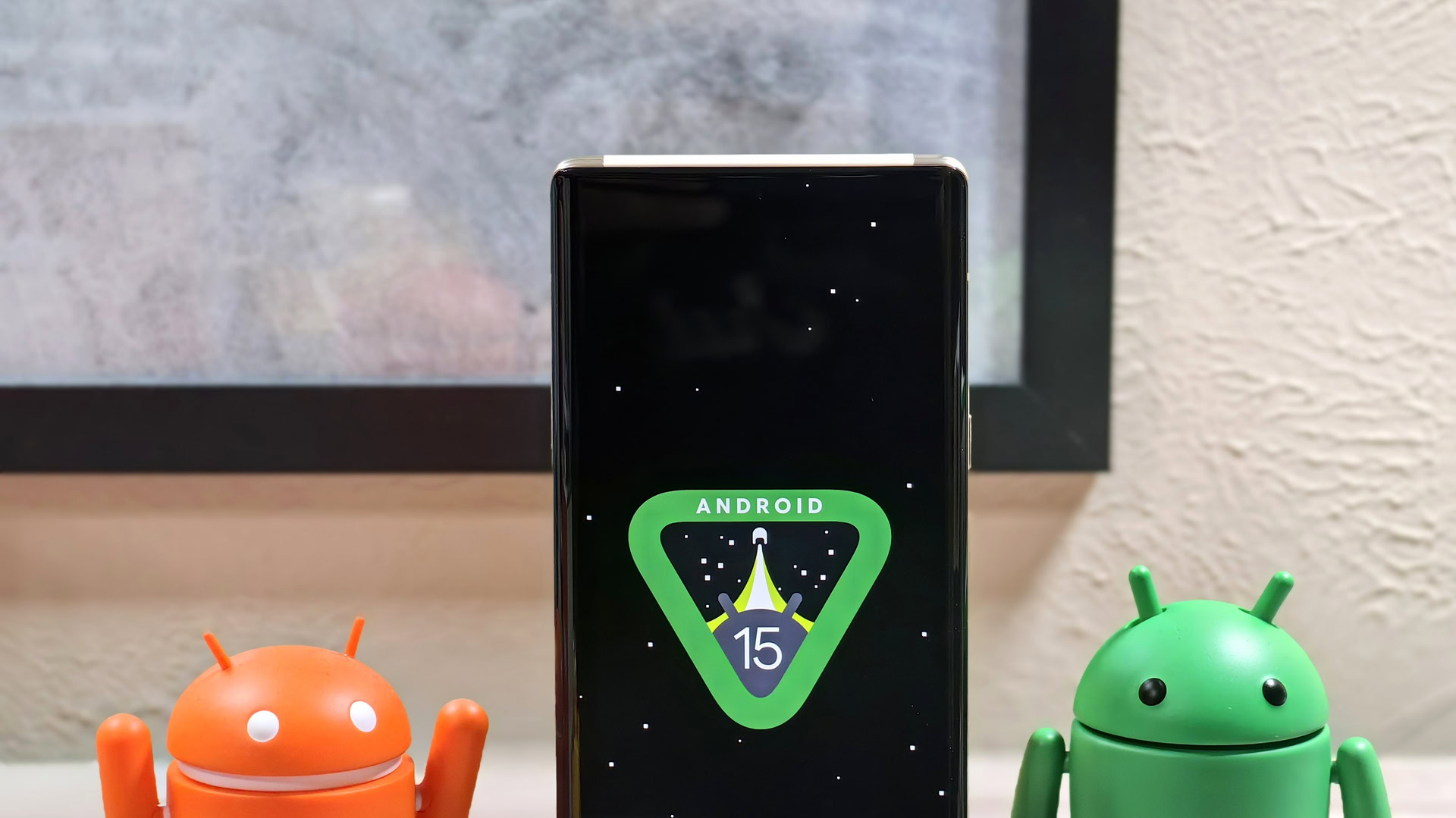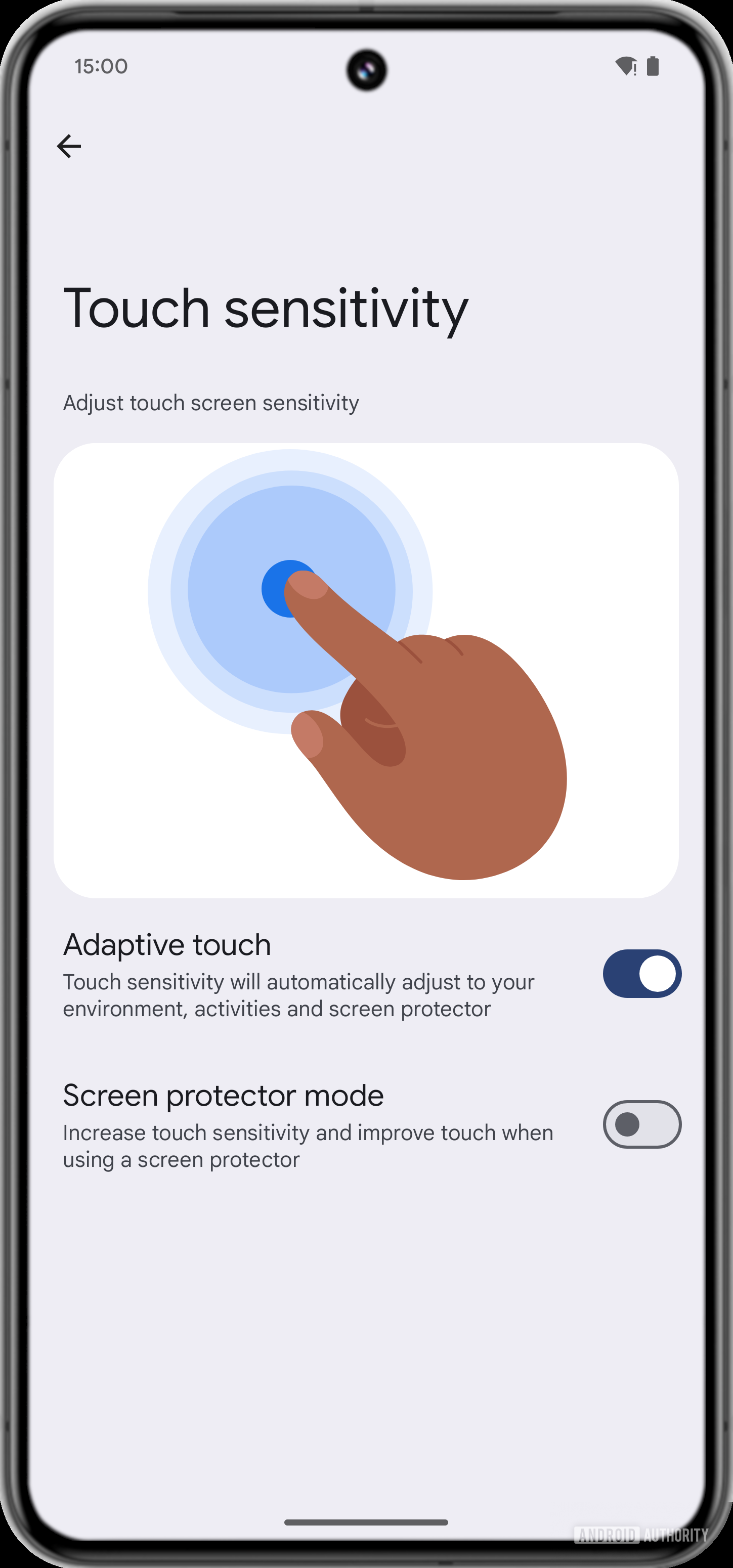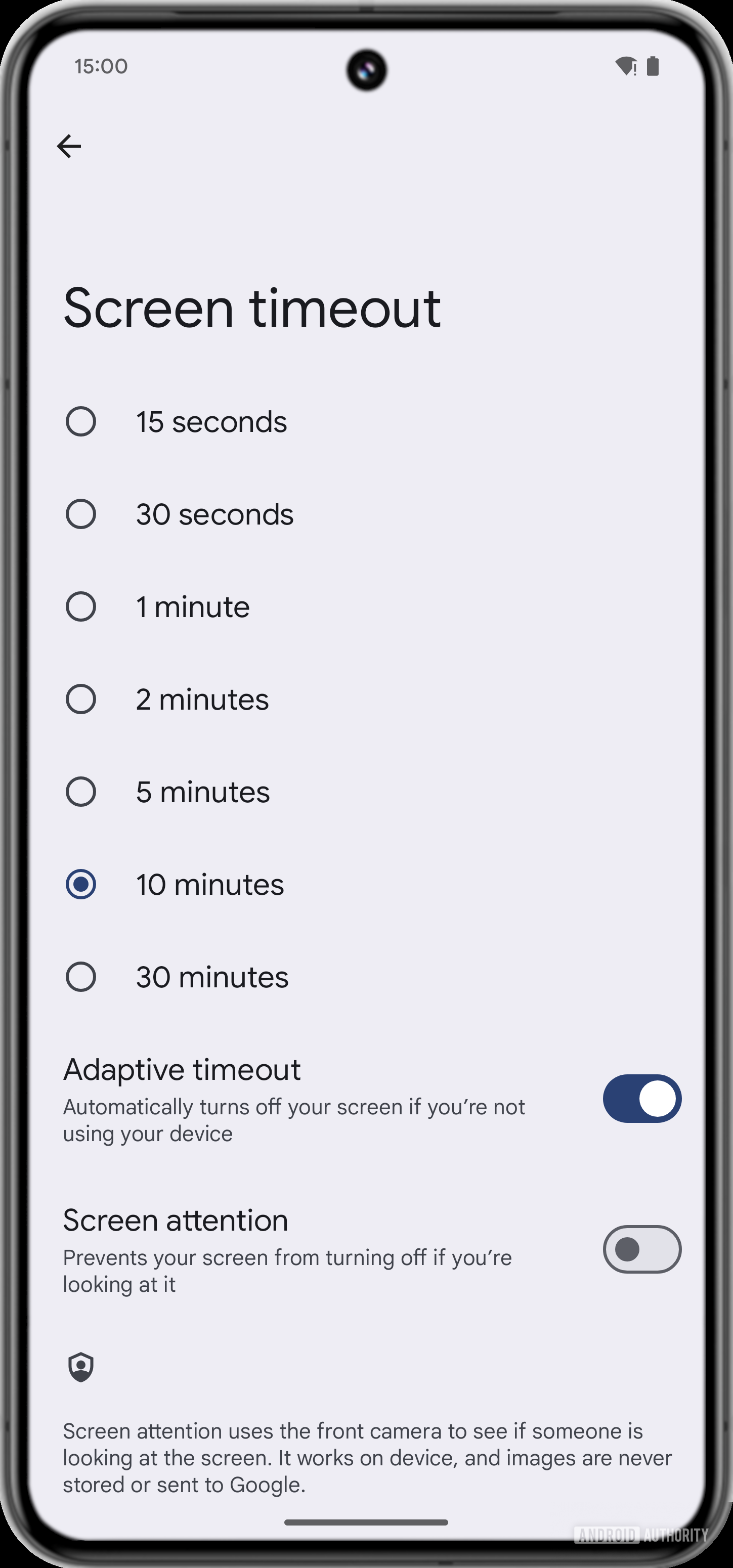Affiliate links on Android Authority may earn us a commission. Learn more.
Here's even more info on four of the most exciting new Android 15 features
Published onJuly 1, 2024

- We have more info on Android 15’s new Adaptive Touch, Even Dimmer, Adaptive Timeout, and Audio Sharing features.
- Only one of these features — Adaptive Timeout — is currently available to users, while the rest are hidden.
- Unfortunately, we still don’t know when the other three features will launch.
We’re likely just weeks away from the launch of Android 15, the next major version of Google’s Android operating system. We expect it to launch alongside the Pixel 9 series on August 13. With the release of Android 15’s second beta at Google I/O in May, users already have access to many of the update’s new key features. However, Google has a lot more in store. Android 15 features like Adaptive Touch, Even Dimmer, Adaptive Timeout, and Audio Sharing are not available even in the latest Beta 3 update, but we managed to collect more information on them, including screenshots of where they’ll appear in Settings.
Adaptive Touch: Intelligently adjust your Pixel’s touch sensitivity
Many smartphones already boast some sort of touch-sensitivity boost, usually labeled as a “screen protector mode,” or something similar. This mode can compensate for thick or low-quality screen protectors that reduce your phone’s touch sensitivity (hence the name). However, this mode is something that you must actively enable to take advantage of, which means it’s likely that some users who need it don’t have it enabled — or even know it’s there.
To solve this, Google is working on an Adaptive Touch mode that automatically adjusts your smartphone’s touch sensitivity based on various factors. These factors include your environment, activities, and whether or not you have a screen protector applied. When I first discovered this new mode back in March, I wasn’t able to get the toggle to appear in the Settings app. After a bit of tinkering in the latest Android 15 Beta 3 update, though, I could finally surface the Adaptive Touch toggle under Settings > Display > Touch sensitivity.

Unfortunately, I still don’t know exactly what environmental factors or activities trigger the new feature to change the touch sensitivity. According to the code I analyzed, this feature is intended for the Google Pixel 9 series, so it’s possible Google will announce the feature at the upcoming Made by Google 2024 hardware event on August 13. As mentioned, this is also when we expect to see the stable launch of Android 15 as a whole.
Even Dimmer: More powerful replacement of Extra Dim
If your phone’s minimum brightness level still isn’t dim enough for you, Android has a feature called Extra Dim that dims the screen beyond its minimum brightness. Extra Dim can be enabled through its dedicated Quick Settings tile or by navigating to Settings > Accessibility, but it’s worth noting that, just like with a screen protector mode, this must be done manually. That means if you turn it on at night to dim the screen, you must remember to manually turn it off in the morning — unless you want to deal with a dimmed screen all day.
That’s where Android 15’s new Even Dimmer mode might be useful. This feature, which I first documented back in April, also lets the display brightness go dimmer than normal, just like Extra Dim. Unlike that feature, though, Even Dimmer is meant to be kept on indefinitely rather than toggled as needed. This feature is intended to allow the existing adaptive brightness feature to automatically lower the display brightness even more than usual when under extremely low levels of ambient lighting, making it so you won’t need to toggle the Extra Dim feature manually at night.
In my original post on this feature, I wasn’t able to get Even Dimmer to show up. However, with a bit of tinkering, I finally managed to make the toggle appear under both Settings > Display and Settings > Accessibility. What’s more, I learned that, after surfacing Even Dimmer, the Extra Dim feature disappeared from the list in both locations, suggesting that Even Dimmer might serve as its replacement.
Adaptive Timeout: Automatically turn off your screen when not in use
With the release of Android 15 Beta 3, Google quietly introduced the new Adaptive Timeout feature that I discovered back in April. The feature is currently only available on the Google Pixel 8 series and can be found by navigating to Settings > Display > Screen timeout. According to the description, this feature “automatically turns off your screen if you’re not using your device.”

That sounds pretty straightforward, but it isn’t exactly clear what “not using your device” means. Many users who enabled the toggle — myself included — thought it didn’t work at first because we tested it by setting a longer screen timeout and then leaving our phones idle on a table. However, the feature actually seems to utilize your phone’s proximity sensor to check if there’s anything in front of it. If there is, then it shortens the screen timeout and turns the screen off early.
This is why nothing happens when users leave their phones idle on a table. If you’re the type of person who likes to set longer screen timeouts but often forget to lock your phone before throwing it in your pocket or bag, then Adaptive Timeout might prove to be a useful security and battery-saving feature.
Audio Sharing: A new shortcut in the Bluetooth Quick Setting dialog
Lastly, here’s a quick update on Android 15’s upcoming Bluetooth audio-sharing feature that I documented back in April. When I first enabled the feature, the only way to actually start an Auracast stream was to navigate to Settings > Connected devices > Connection preferences > Audio sharing. However, in Android 15 Beta 3, Google actually added a new way to start an Auracast stream by using a button in the Bluetooth Quick Settings dialog.
After connecting my Samsung Galaxy Buds 2 Pro to my Google Pixel 8 Pro and opening the Bluetooth Quick Settings dialog, a new Share Audio button appeared in the bottom left. Tapping this button initiated an Auracast stream using the audio stream settings I previously saved. The text on the button then changed to Sharing Audio to reflect that I was now broadcasting.
Between when I first enabled this feature and now, Google also tweaked the wording of the Auracast notification as well as the Audio Sharing settings page, which you can see below.
Android 15 might seem like a minor update on the surface, but if you really peel things back, there are a lot of changes. Unfortunately, many new features are not available yet, as they’re either being held back for the launch of the new Pixel 9 series or for a future update. Still, we’ll continue to document any changes we notice in these upcoming features so that you know exactly how to use them when they drop.